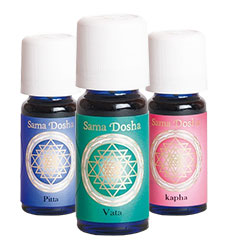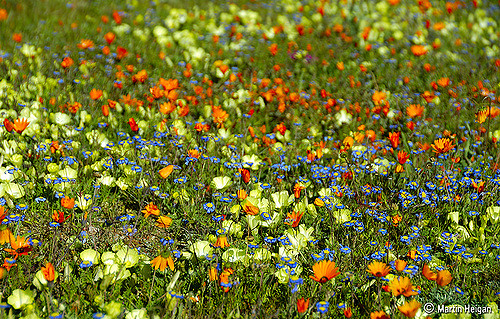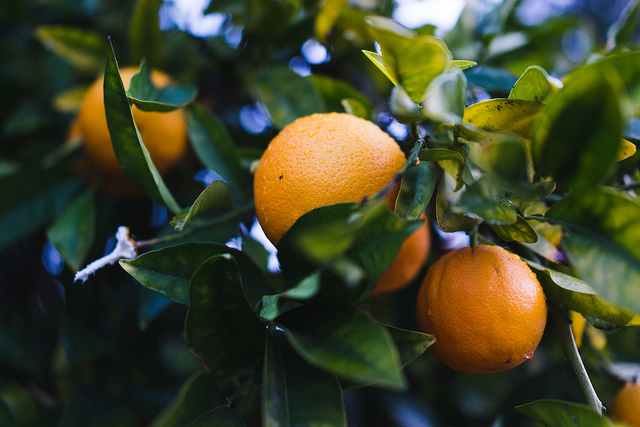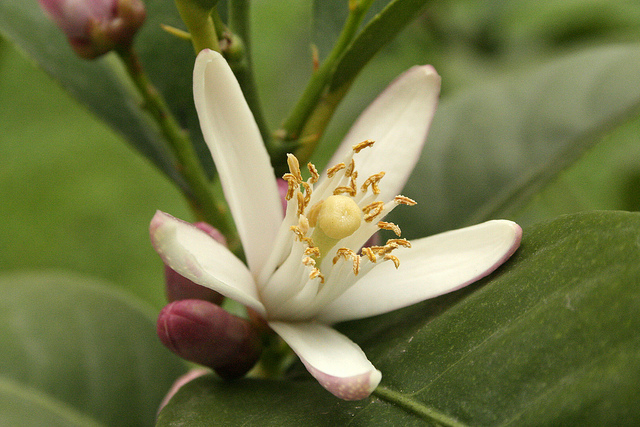Synergy means combined energies in togetherness. It is natural for the relative field of life to be expressed in diversity, but this diversity becomes compact in a greater directedness when it is intelligently and harmoniously put together to create new units of wholeness. Thus, a bouquet of flowers finds its charm in a collectedness of diverse flowers, or a meal finds its savour in the combination of different tastes linked together under the creative genius of a good chef. When diverse elements combine in an intelligent way, they enhance each other’s uniqueness so that the total becomes more than the collection of its parts merely added mathematically together. Dr. Jean Valnet, one of the founders of modern aromatherapy already pointed out that the electrical resistance of essential oils, blended together, was easily doubled or tripled compared to the added electrical resistance of its single oils.
A perfume “breathes” through successful blending
Also good natural perfumery uses this synergistic law in order to create olfactive experiences which often are strikingly different from the single fragrant elements combined. Top notes like Bergamot, Lemongrass or Eucalyptus oils with their highly volatile compounds unite with heart notes like Lavender, Clary Sage or Petitgrain to be transformed or rather “enchanted” by base notes like Frankincense, Jasmine, Sandalwood or Vetiver. A good perfume composed with natural compounds is never a “single odour” experience, but lives from the blend of a complex unity of fragrances put together under the guidance of a refined consciousness and a trained “nose”. It will send olfactive messages to the brain, and this over hours or even days, so that one can rejoice in a symphony of total experience. throughout the “sequential brain firing” of its compounds.
Synergies can be made for different purposes
In learning about Aromatherapy and fragrance notes we come to understand that essential oils can be blended together for many different purposes. One of these purposes is to create synergies for therapy, or, let us say, for enhancing well-being, health and longevity within the human physiology. Now, within this theme of “fragrance for life” we can follow different lines of approaches, some of them more simple, some of them more complex.
A simple way would be to understand that certain natural bio-chemical compounds found in essential oils have this and that effect and to blend oils which contain a majority of this same compound. The basic similarity in the bio-chemical profile of Ho-oil, Rosewood oil and, Spanish Marjoram, all showing a high percentage of linalool, a monoterpenic alcohol, would already make a good synergy. We could take advantage of the tonifying, but also highly anti-bacterial effect of this natural plant-linalool in blending these oils together. We should, however, not forget, that the curative effect of plant compounds is not only linked to the dominant “chemotypes”, but also lies in what perfumery would call the “impurities” or trace elements, powerful “minorities”, often hidden behind the impact of the major compounds.
Another approach would be to blend oils from the same genus or vegetal group and with this touch the underlying “plant field” or “resonance” which has been built into this group by Nature herself. For example combine different types of Lavender oils, or different types of Eucalyptus or Basil oils, etc. Although most often very different in their biochemistry and their olfactive notes, all these oils from the same genus follow a hidden line of sameness which can only enhance the desired therapeutic effect.
Citrus auranthium, three essential oils from the same tree
Similar to this is the method to combine oils from the same species, but stemming from different “organs” of the plant. For example we can combine Neroli oil (flower oil) with Bitter Orange oil (rind oil) and Petitgrain bigarade oil (leaf oil), all of them derived from the Bitter Orange tree (Citrus auranthium) to make a powerful synergy with soothing, relaxing effect, good to use as a pillow spray or as an additive for a light massage before sleeping. Or, another example, we could take Angelica root oil, -leaf oil and -seed oil for creating a synergistic blend in order to enhance the anxiolytic effect of this beautiful oil.
Synergies in the Ayurvedic way
Also, if we follow informations gathered from ancient folk medicine, often based on age-old wisdom (“as it was before”), we can find guidelines which allow us to deduce elementary laws of Nature from them. Ayurveda, the wisdom of longevity from ancient India, tells us that we have to look at the “doshas” of plants and of the human physiology in order to recreate balance in the system. A physiology which is overheated (Pitta dosha) would not be given easily a blend with dominant Pitta-oils like Thyme, Oregano, or Savory, but rather a cooling blend with Peppermint, Lavender, Eucalyptus, or the like. On the other hand, if we want for example to enhance the fire element (Agni) in the digestive system, we would tend to use oils which have a certain Pitta-increasing action on the human body like Cinnamon, holy Basil, Anise or the like (cf. Oshadhi’s Sama Dosha line of ayurvedic blends).

Oshadhi’s Sama Dosha Line
Therapeutic blending
Also, one may blend oils with the perspective to strengthen the physiology so to say in a “multiplied stroke”. A blend to help digestion for example will not only focus on the stomach or the intestines but also try to give relief to the liver and also possibly to the gall bladder. And a blend to help against insomnia will not only calm the mind and soothe the nerves, but also work on underlying problems like depression or negative emotions and may also include oils which have an “opening” anti-spasmodic effect. It is the overall feature of synergistic Aromatherapy to target different layers of the same problem and not – like in allopathic medicine – remain stuck with the symptom alone. So to say: We do not put cortisone on a rash of neurodermitis, but we look after the hidden source of the problem and try to synergistically treat different psycho-physiological levels at the same time.
We should not forget that an essential oil in itself is already a synergy of – in most cases – numerous bio-chemical compounds. Nature herself in creating plant life has disposed of countless elements, often put together in a synergistic way in this or that plant, so that one plant often can take care of many different functions simultaneously. Each plant and each oil has numerous healing effects pertaining to its specific energy field, which finds its outer expression through colour, shape, size, fragrance, compounds etc. These compounds match with the human organism in an intrinsic way like key and lock and can fill up specific “holes”, created by weakness or disease within the normally frictionless flow of energy throughout the physiology. The complex structure of these compounds is also the reason for the multiple healing effects of one and the same essential oil. Peppermint oil for example helps simultaneously against nervous, hepatic, skin, circulatory, immune, intestinal and psychological disorders. Nature is in herself the best example for synergistic behaviour. On the other hand, chemical treatment of plants with substances such as herbicides, pesticides, chemical fertillizers etc. – this has been scientifically shown – tends to decrease the richness of the phyto-chemical compounds and therefore diminishes the multiple healing effects of essential oils.

Natural therapy uses the laws of diversity in unity
Now, if we analyze these few examples we find that the main reason for the synergistic approach in modern Aromatherapy is to increase diversity in unity. We want to create a specific effect, and in order to create it, we need to introduce complexity in an intelligent way, without disturbing the natural balance. Contrary to the allopathic, mono-molecular approach, which tries to isolate the active principles from a plant and then, in a second step, tries to synthesize the same, Aromatherapy goes hand in hand with Mother Nature, honouring and maintaining the infinite complexity of its creations.
This is the reason why, for example, we do not want to loose the over 500 compounds of Rose oil, although the isolated methyl eugenol in Rose oil may have been found to be toxic. Nature has already – within this complexity – provided the means to balance certain compounds against certain others, so that the total of compounds of an oil usually is available in a humanly in-offensive way. Seen from the therapeutic angle, complexity increases the chance for healing and prevents unwanted side-effects. Experience shows that so many bacteria or viruses – through time – get immune against a number of pharma-chemical drugs. This is one of the reasons why more and more natural practitioners (and physicians !) today prescribe essential oils – often even as the first aid remedy to use and often with such a success that it surpasses by far the expectations of those who are still trained in the use of allopathic, mostly mono-molecular chemically synthesized remedies. Of course, there is need for more research in the realm of Nature’s medicine. We have chosen the way of scientific investigation in our Western world, and we owe it to our established principles to be able to prove that natural remedies work and that they are harmless. We are no more using the shamanic way of intuitive, spirit-guided healing, nor the way of our ancestors based on traditional knowledge and experience of thousands of years of living in togetherness with Nature and her plants. So many compounds in the medicinal plants and their essential oils :
- Have not been explained with regards to their healing properties.
- Have not been analyzed in a scientific way.
- Have not been fully understood in their interdependence and mutually enhancing dynamism.
And so much of human physiology with its numerous ailments has not been observed in its reactions and resonance to medicinal plants. This does not give us the right to assume that they are useless. Notwithstanding, far over 5,000 research studies on essential oils until today are quite a step ahead to make Aromatherapy a serious partner in the team-work for creating a new era of holistic healing.
In increasing the complexity in our blends we give ourselves a higher chance to tune in with Nature herself and thus increase the curative probability and the chance for healing. It is like entering a castle with so many locked up rooms, chambers, halls, corridors. The more keys we have with us, the greater will be the chance to unlock the doors and enter the castle.
That’s why, in the final end, in creating our formulas, we take inspiration from Nature and from those who were and are connected to Nature’s wholeness. Nothing has been invented or just randomly put. Most of our synergies are based on ancient folk medicine and experience, confirmed by modern Aromatherapy research. This “blending” of ancient and modern seems to us the most reliable way for a powerful and effective plant medicine of the future.
Dr. Malte Hozzel
* to find Oshadhi near you please visit www.oshadhi.com


